
The federal government ‘sees a long-term future for the oilsands.’ Here’s what you need to know
An internal document obtained by The Narwhal shows how the natural resources minister was briefed...
On a cloudy late summer day, the only users of a railway track in the downtown core of Brampton, Ont., are a few squirrels and the occasional pedestrian taking the path untrodden.
The 51 kilometres of dark steel track seem stuck permanently in the unkept wild ground. They cut through one road after another, past a handful of high-rise buildings, past city hall, schools, churches and a youth correctional facility, then into overgrown woods that meander through the city. The railway crossing bells don’t ring anymore, the red-and-white Xs now serving only as signposts for people travelling by other means, usually cars.
It’s hard to imagine that these overgrown tracks once carried bustling passenger rail cars, taking people through the three communities now known as Peel Region: from the historic town of Streetsville, now part of Mississauga, through the industrial outskirts of Brampton and then its downtown, then northwest past the lush agricultural fields of the town of Caledon. The final stop was the picturesque town of Orangeville.
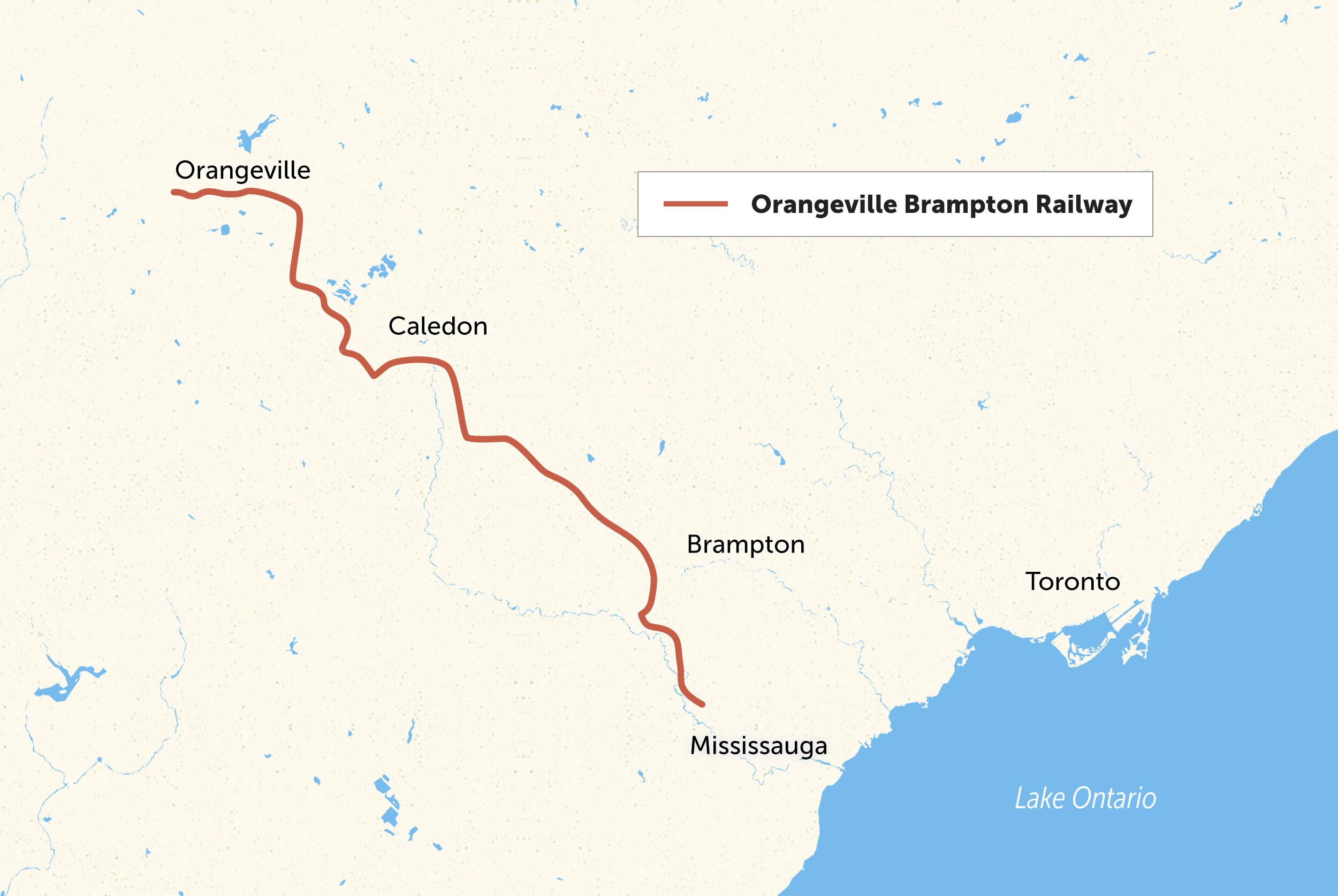
For the past 21 years, the tracks have been used infrequently and only for freight. Orangeville owned the rail bed and, according to Mayor Sandy Brown, the town was “hemorrhaging” $450,000 a year in property taxes to the three Peel Region governments in order to preserve rail service. Orangeville city council estimates it has lost close to $10 million across the over 20 years it ran the railway line.
But that deficit is now less of a worry: in July, Peel Region purchased the railway lands for $5.8 million, officially ending 140 years of rail in Orangeville. The City of Brampton also bought the rail yard where trains were parked for $24.25 million.
The plan for the land, at least for now, is to convert the corridor into a recreational trail connecting all four communities. It would be a first for Ontario: a significant nature trail that cuts right through a busy city’s downtown core, planting a permanent green space in some of southern Ontario’s most populated suburbs.
“Land that traverses across cities like this doesn’t often become available,” Jake Mete, a senior manager with Brampton’s park planning department. “And a trail that runs through an urban area? There’s none in Ontario.”
If it gets built, the trail could offer residents of the Greater Toronto and Hamilton Area (GTHA) a car-free way to explore a long route through the region.
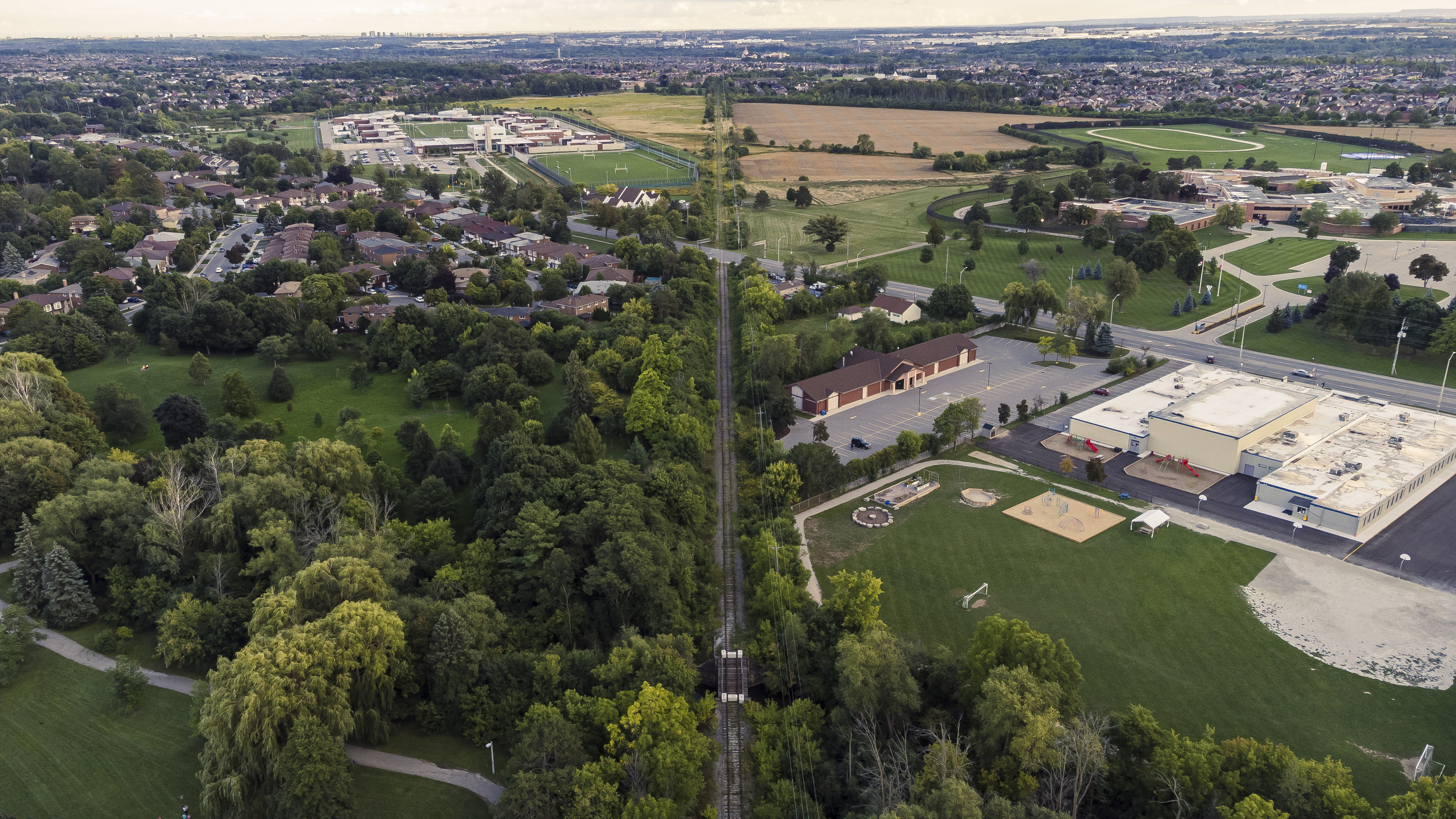
Rail trails are exactly what they sound like: former rail beds that have been turned into pathways for active recreation like biking, hiking and more. There’s a decades-long movement in the United States that seeks to create “a nation connected by trails” and in Vancouver, city council bought 42 acres from Canadian Pacific Railway to convert into a “greenway.” There are already close to 100 rail trails in Ontario, but most are in either protected areas, like the Niagara Escarpment, or in rural places like the Bruce Peninsula, where land is much less developed than in the south.
Peel Region needs greenspace, but as southern Ontario grows rapidly and Doug Ford’s provincial government bets on highways to connect the suburbs, some residents worry about willfully ignoring an easy public transit solution. While the route curves through farmland, industrial ground and some hilly landscape, a big section in northern Brampton is straight and, some say, could be used to create a light rail transit line connecting to Ford’s planned Highway 413 or proposed new GO Transit hubs.
“Peel Region not thinking about turning parts of this railway into transit corridors is concerning,” said Moaz Ahmad, a longtime transportation consultant and Mississauga resident. “The infrastructure is there and it wouldn’t cost a lot of money and would encourage climate-friendly movement in these cities.”
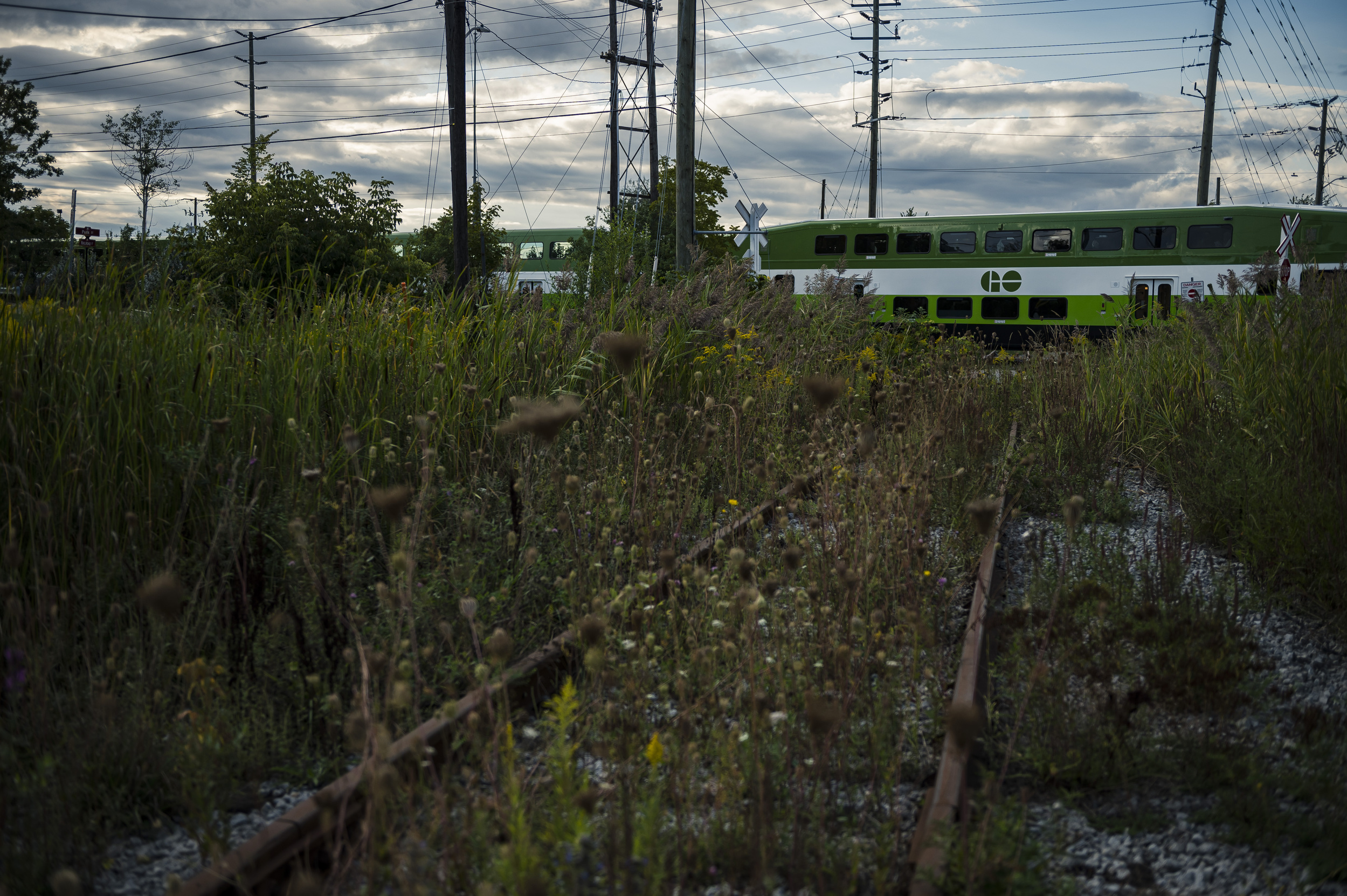
The advocacy organization Transport Action Ontario agrees — in November 2020, the group wrote a letter to Transportation Minister Caroline Mulroney arguing the rail route “will be critical to road congestion and vehicle emissions mitigation.”
“The Orangeville, Caledon and Brampton areas to the northwest of the GTHA are experiencing relentless population growth,” the letter read. “Even in a post pandemic environment this will put additional stress on area roads including highways 10 and 410 used for commutes into the GTHA and the burgeoning commercial centre surrounding Pearson airport. The Orangeville-Brampton rail route will be critical to road congestion and vehicle emissions mitigation. It is potentially an existing low-cost solution to an otherwise expensive future mobility problem …”
Orangeville Mayor Sandy Brown told The Narwhal the town spoke to Metrolinx about transit uses before approving the trail plan but the provincial transit agency replied that the region doesn’t have the population to sustain a commuter train service. Metrolinx didn’t confirm this to The Narwhal, but said that ridership on its weekday Orangeville buses is low, at barely 50 per cent capacity.
The region hasn’t closed the door on possibly using the site for transit: a staff report from May endorsed the rail trail, but also mentioned the land’s potential future use as a “utility corridor to help meet the needs of a growing region.” Without offering specifics, the city’s official plan states that it will protect the decommissioned rail infrastructure and continue to advocate for the line to be incorporated into Metrolinx’s commuter rail network, but that the city is open to alternative uses for the old railway in the meantime. Another potential use is as a corridor for broadband internet service.
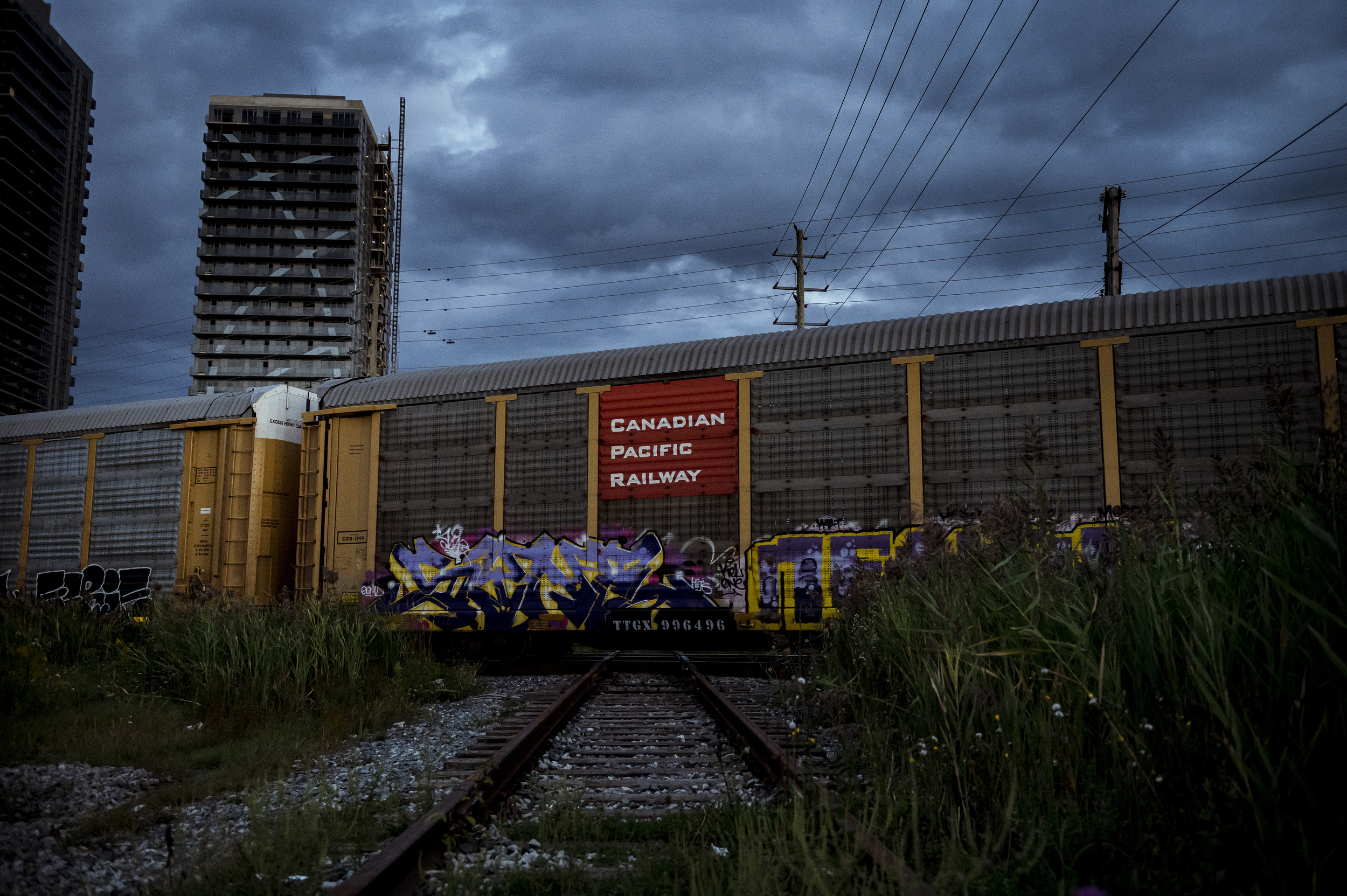
The first train on the Orangeville Brampton Railway rolled into town in April 1867, eventually becoming part of the Canadian Pacific Railway’s route through the regions northwest of Toronto. As the manufacturing industry dwindled in the last half of the 20th century, ridership decreased and industries shifted to using ships and trucks.
Orangeville bought the line, and a conglomerate of local businesses formed, determined to use the railway for freight. The group employed 422 people and, for the last two decades, kept an estimated 1,300 trucks off the town’s roads every year. But by 2021, only five manufacturers between Orangeville and Brampton relied on the line.
“It wasn’t financially viable for a small town in Ontario to keep it in service,” Mayor Brown told The Narwhal. “We were struggling to support it and incentivize the rail to continue.
And so in March — three months after the last train rode the line on December 17, 2021 — Orangeville sold the land, and began ripping out the tracks.
There are no official timelines or costs yet for the proposed rail trail. The railway group estimates the cost to decommission the rail line could range between $1 million and $4 million, which accounts for the money the region would get from the disposed steel.
The estimate doesn’t factor in the costs to convert the rail line into a multipurpose trail, and a lot has to happen to make it a reality. There would be cleanup along the whole route to turn it into a green corridor. All 47 rail crossings also have to be decommissioned and traffic redirected or reorganized. The provincial government will also have to conduct an environmental assessment, which could take months to years. The public will be given a chance to comment.
Then comes the planning involved in connecting all the parcels of land as seamlessly as possible. Right now, major Peel Region arteries, from Highway 401 to Hurontario Street, are heavily congested due to rapid population growth. This will only get worse as the cities start building new housing, campuses and hospitals.
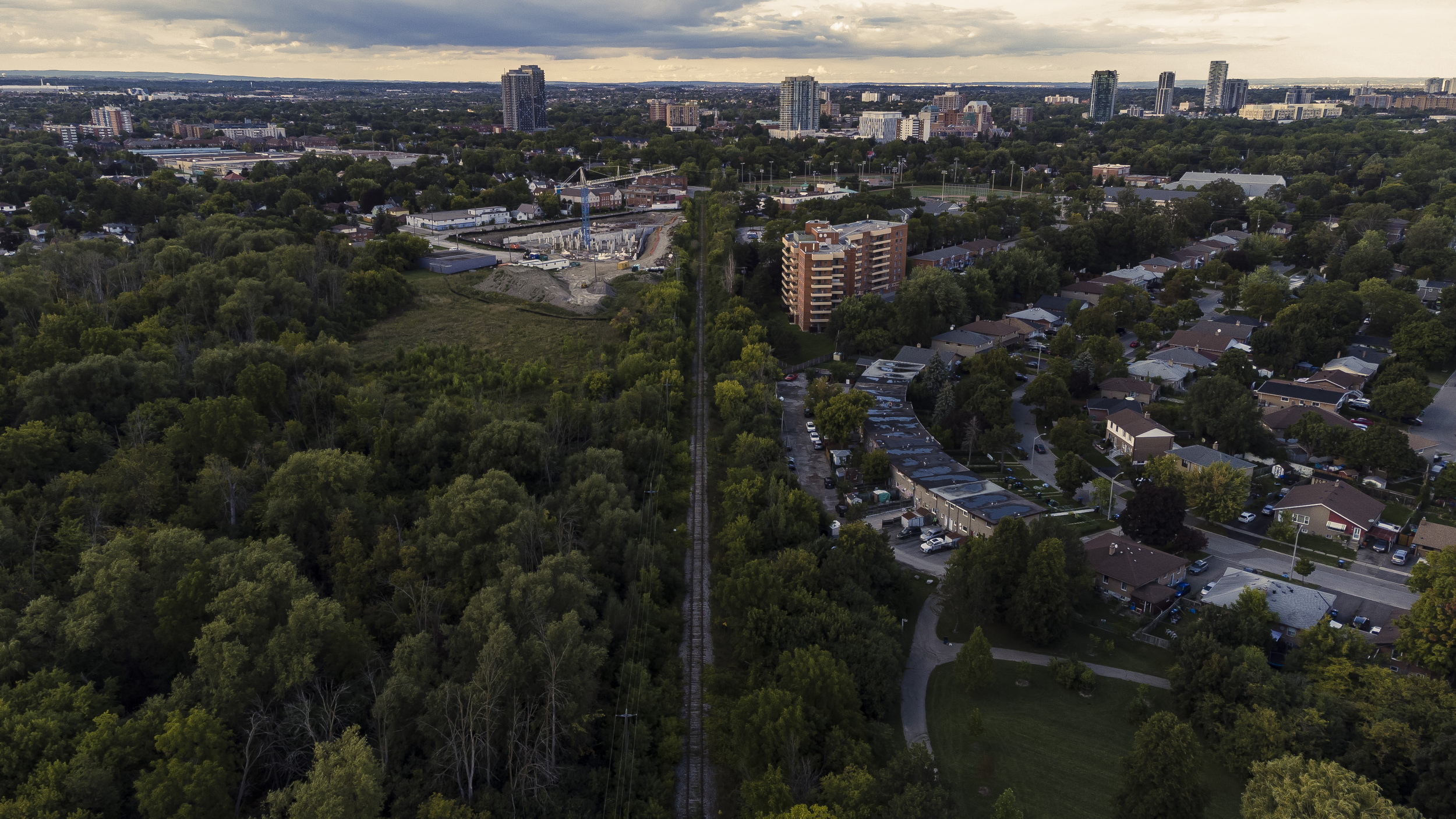
For Brampton, one of Canada’s fastest-growing urban centres, creating a green corridor that cuts through downtown — literally steps from city hall — will be “a unique challenge,” Mete said. “It’s going to take a few years. But the beautiful thing is, when it’s done, this will expand the network across the Greater Toronto and Hamilton Area.”
After this fall’s municipal elections, Brown would like to see the creation of a “trail summit” that brings together staff and politicians from all four municipalities along the trail route. Also involved would be the Credit Valley Conservation Authority, which already has plans in place to build a 100-kilometre pathway through the Credit River Valley — from the hills of the headwaters in Orangeville to Lake Ontario in Port Credit. Parts of the rail trail overlap with this pathway, and the conservation authority told The Narwhal it “looks forward to working with the municipalities to discuss how the Credit Valley Trail route could be achieved through this acquisition.”
“I think we need to have a collaborative effort to make sure that we provide a great customer experience for those using the trial,” Brown said.
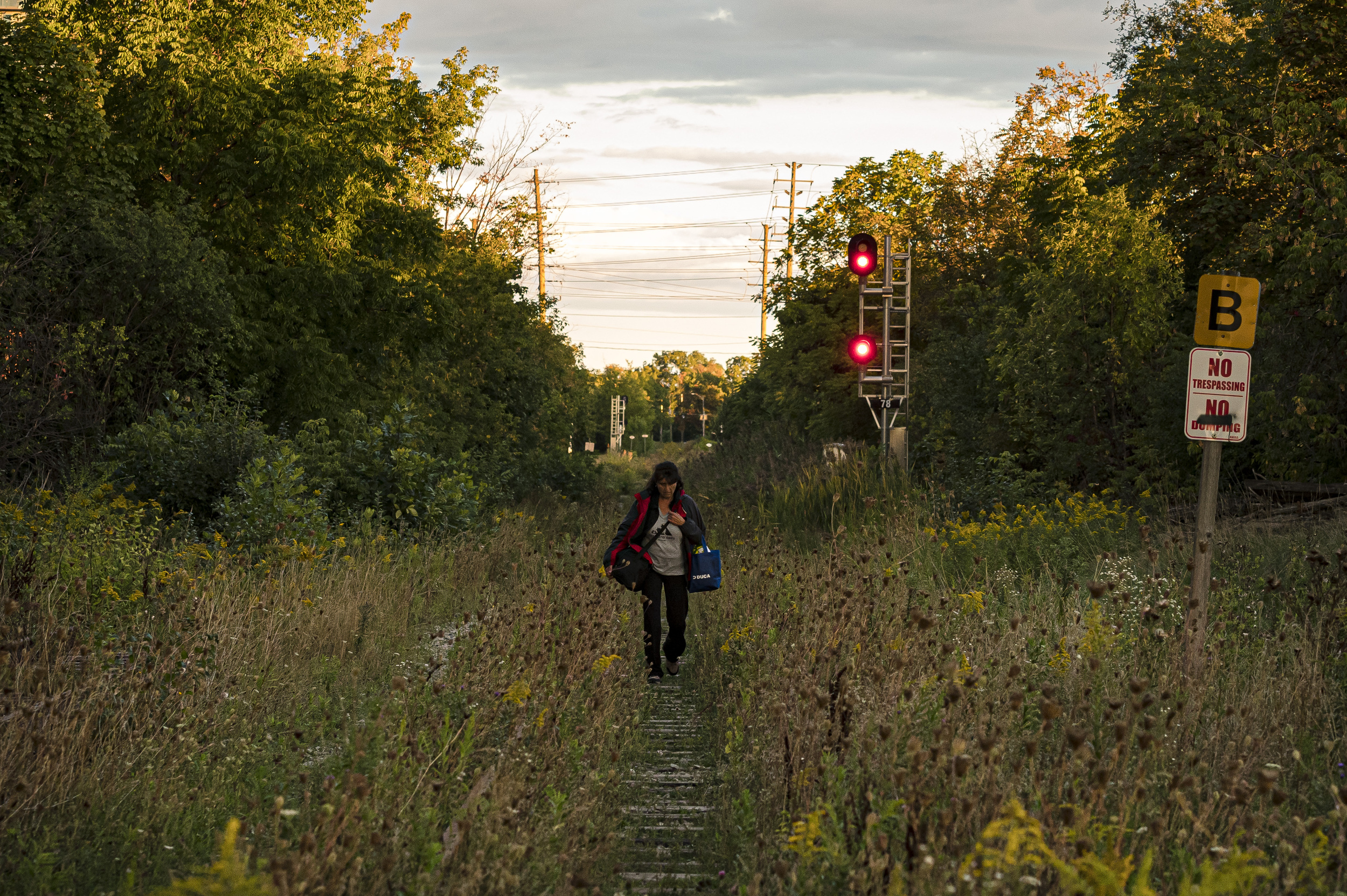
Mete added that integrating a rail trail into both Mississauga and Brampton’s long-term planning goals is an opportunity the cities have never had before, to increase access to much-needed green space for its suburban residents. Along with the under-construction Hurontario Light Rapid Transit (LRT) line, he thinks the trail could change the way residents get around in cities long planned to prioritize cars.
“We’re imagining a future where a resident of Mississauga could take their scooter or their bike and jump on the LRT, go to Brampton, jump onto the trail and go wherever they want to,” Mete said. “Having a safe green space for big suburbs, well the sky’s the limit.”
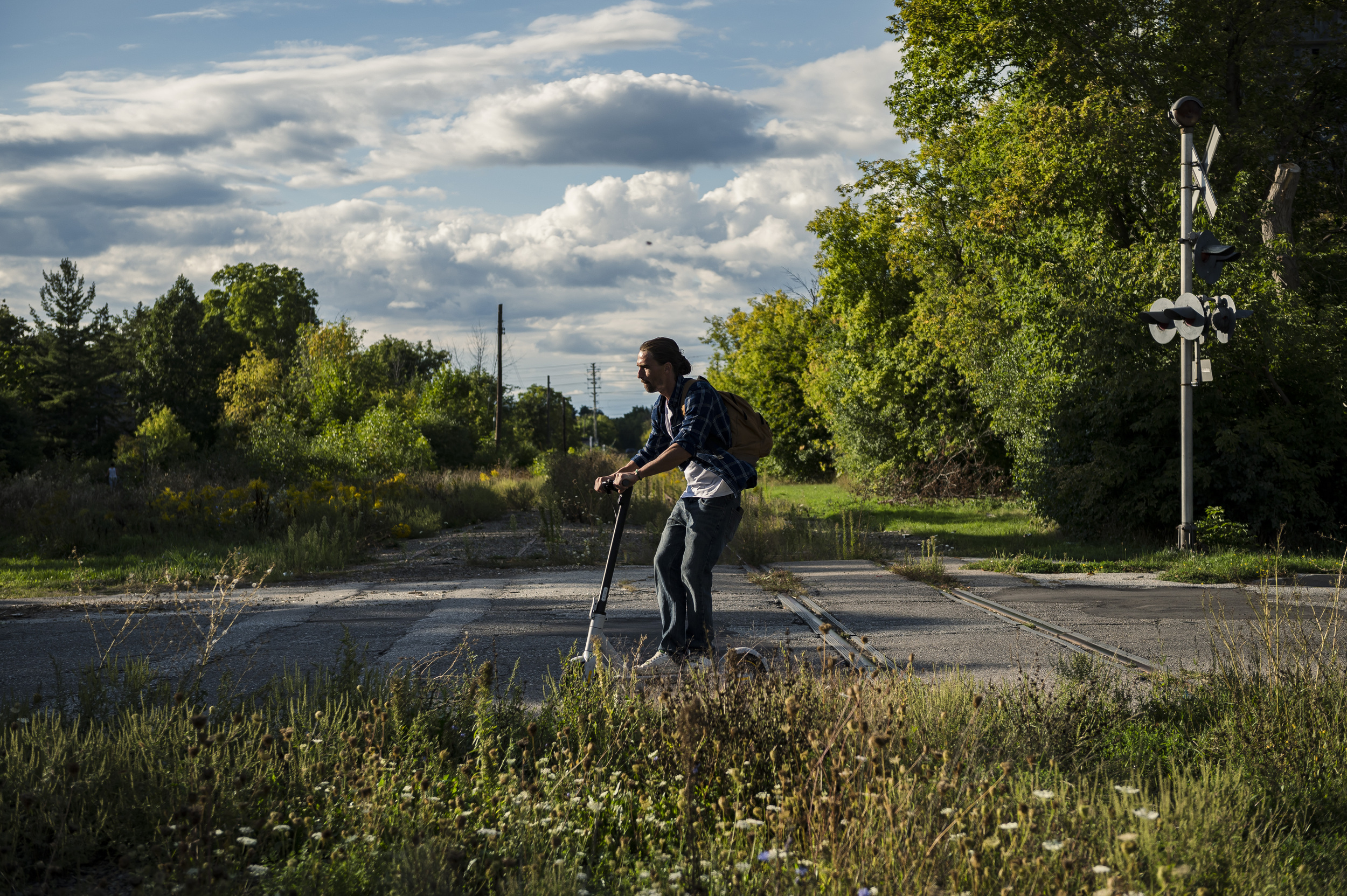
But Ahmad remains wary. “I think it’s a great corridor to connect people,” he said. “There are a lot of opportunities to make it useful for commuting and regular cycling and I hope whoever ends up in city council this fall looks into that.”
“Just having a trail isn’t enough,” he added. “You need to provide the equipment and support to encourage better behaviour by everyone, not just leisure cyclists on a Saturday morning.”
Get the inside scoop on The Narwhal’s environment and climate reporting by signing up for our free newsletter. On March 17, federal Conservative Leader Pierre Poilievre...
Continue reading
An internal document obtained by The Narwhal shows how the natural resources minister was briefed...

Notes made by regulator officers during thousands of inspections that were marked in compliance with...

Racing against time, dwindling habitat and warming waters, scientists are trying to give this little-known...
